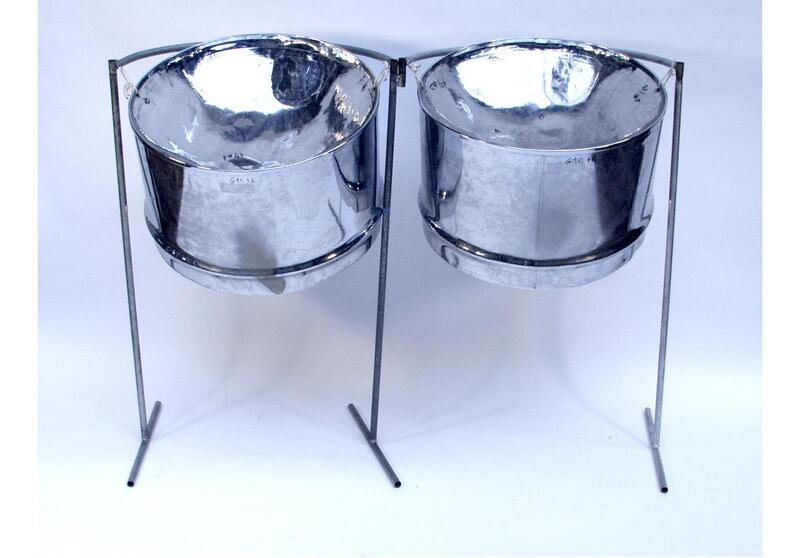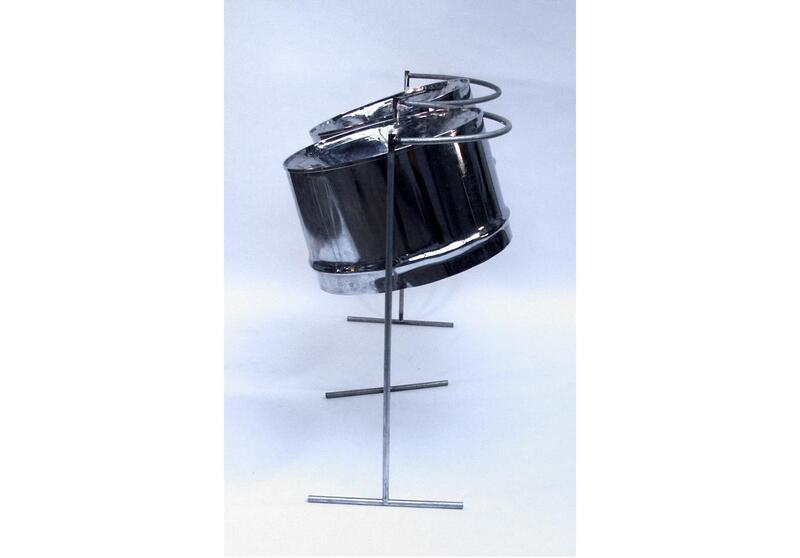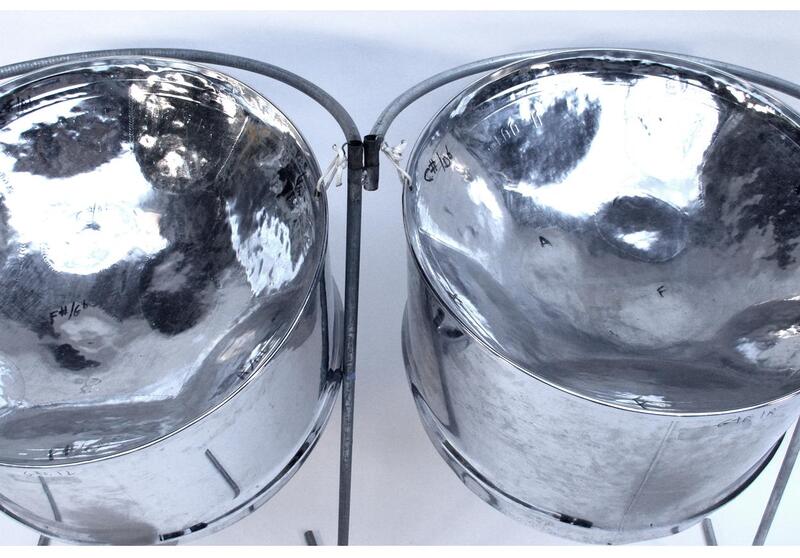Guitar Pan
Title
Guitar Pan
Video
Physical description
This instrument consists of two pans with a “skirt” or side length of approx 45 cm. The lowest notes found along the circumference of the bowl are U-shaped, while the higher octave notes are either oval or circular-shaped inside. The guitar pans must be suspended on stands or a rack to allow the drums to resonate and are played with thick rubber mallets.
Historical background
The middle range guitar pans were designed to support the melody played by the “frontline” or upper range pans (such as the tenor, double tenor and double second pans). The guitar pans are used to support the lower portions of the harmony by “strumming” chordal accompaniment as well as playing simple countermelody.
Tuning
The double guitar pans have an average of 20 notes with the chromatic range falling between C3 and G#4. The triple guitar (not found in our collection) has 27 notes with a chromatic range falling between B-flat2 and C5.
Geography
Trinidad and Tobago
Classification
111.241.22 Sets of gongs with divided surface sounding different pitches
Ensemble
Steel Pan Ensemble
Materials
Steel
Date/Era
20th century to present
Bibliography
Blake, F.I.R. The Trinidad & Tobago Steel Pan: History and Evolution. Port of Spain, Trinidad: Published by author.
Goddard, George “Sonny.” 1991. Forty Years in the Steelbands, 1939-1979. Port of Spain, Karia Press.
Steumpfle, Stephen. 1995. The Steelband Movement: The Forging of a National Art in Trinidad and Tobago. Philadelphia: Univ. of Pennsylvania Press.
Thomas, Jeffrey Todd. 1985. A History of Pan and the Evolution of the Steel Band in Trinidad and Tobago. M.A. Thesis. Middletown, CT: Wesleyan University.
Additional resources
Pan Trinbago
http://www.pantrinbago.co.tt
http://www.pantrinbago.co.tt
Contributors
Amelia Ingram (2004)
Collection
Citation
“Guitar Pan,” Wesleyan University Virtual Instrument Museum 2.0, accessed January 10, 2026, https://wesomeka.wesleyan.edu/vim2/items/show/33.


